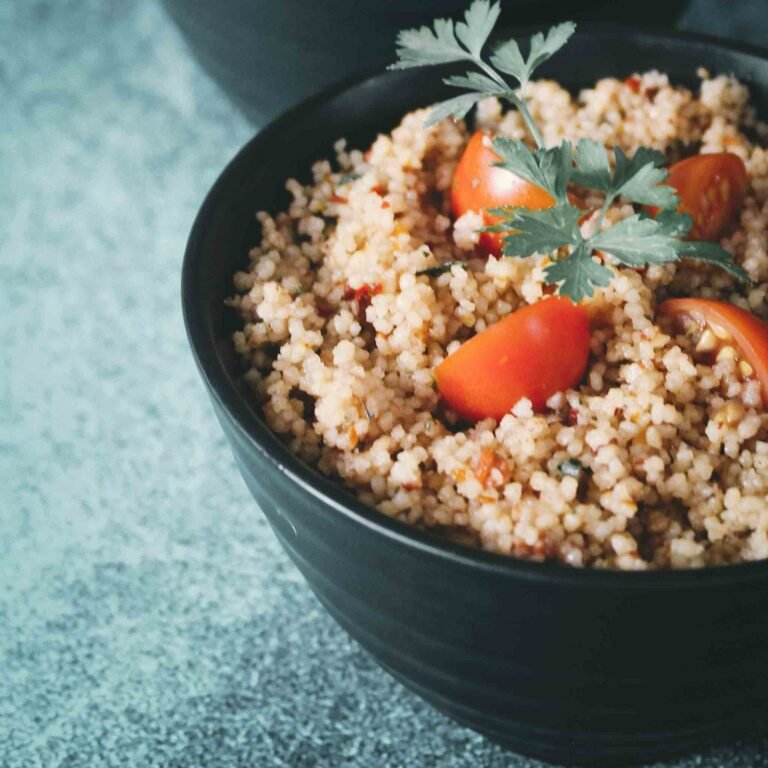Couscous is much more than a simple grain; it’s a culinary cornerstone with a rich history that stretches back over a thousand years. Hailing from North Africa, this tiny, versatile staple has been a part of the region’s cuisine for centuries, and its influence has spread far beyond its origins.

A Brief History of Couscous
- Origins in North Africa: Couscous is believed to have originated in the Maghreb region, which includes present-day Morocco, Algeria, Tunisia, and Libya. The earliest records of couscous date back to the 13th century, though it is likely that this traditional dish has been around even longer. It is traditionally made from steamed semolina wheat granules, which are then fluffed with a fork to create a light, fluffy texture.
- Traditional Preparation: Historically, couscous was prepared using a special pot called a couscoussier, a two-tiered steamer. The bottom pot was used to cook a stew, often rich with meats, vegetables, and spices. The top pot held the couscous, allowing it to steam and absorb the flavors from the stew below. This method not only infused the couscous with deep flavors but also made it a hearty, satisfying dish.
- Cultural Significance: In North Africa, couscous is more than just food; it is a cultural symbol and often served during special occasions and family gatherings. It is traditionally prepared by hand, with each step—mixing, steaming, and fluffing—carried out with care and precision. The communal nature of preparing and sharing couscous reflects the importance of family and social bonds in North African cultures.
- Spread Across the Globe: Couscous began to spread beyond North Africa through trade and colonization. The French, who had colonial interests in North Africa, introduced couscous to Europe, where it began to gain popularity. In the 20th century, as global cuisine became more diverse, couscous found its way into international menus and modern kitchens, appreciated for its versatility and ease of preparation.
Nutritional Value
Couscous is not only rich in history but also packed with nutritional benefits:
- Rich in Carbohydrates: Couscous provides a good source of complex carbohydrates, offering sustained energy release.
- Low in Fat: Its minimal fat content makes it a heart-healthy choice.
Good Source of Selenium: It is a significant source of selenium, an essential mineral with antioxidant properties.
Versatility in Cooking
Couscous’s adaptability makes it a favorite in various culinary contexts:
- Simple Side Dish: Prepare it with chicken or vegetable broth for a flavorful accompaniment to grilled meats or vegetables.
- Salads: Toss it with fresh vegetables and herbs for a refreshing salad.
- Stuffed Vegetables: Use it as a filling for bell peppers or zucchini.
- Sweet Dishes: Transform it into a dessert with milk, honey, and spices.
Couscous is a culinary treasure with deep historical roots in North Africa. From its traditional preparation in the couscoussier to its modern adaptations in global cuisine, couscous embodies a rich heritage and a versatile ingredient that continues to delight and nourish people around the world. Whether enjoyed as part of a traditional meal or explored in innovative recipes, couscous remains a testament to the enduring legacy of North African cuisine.
